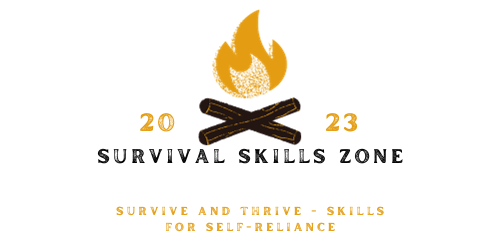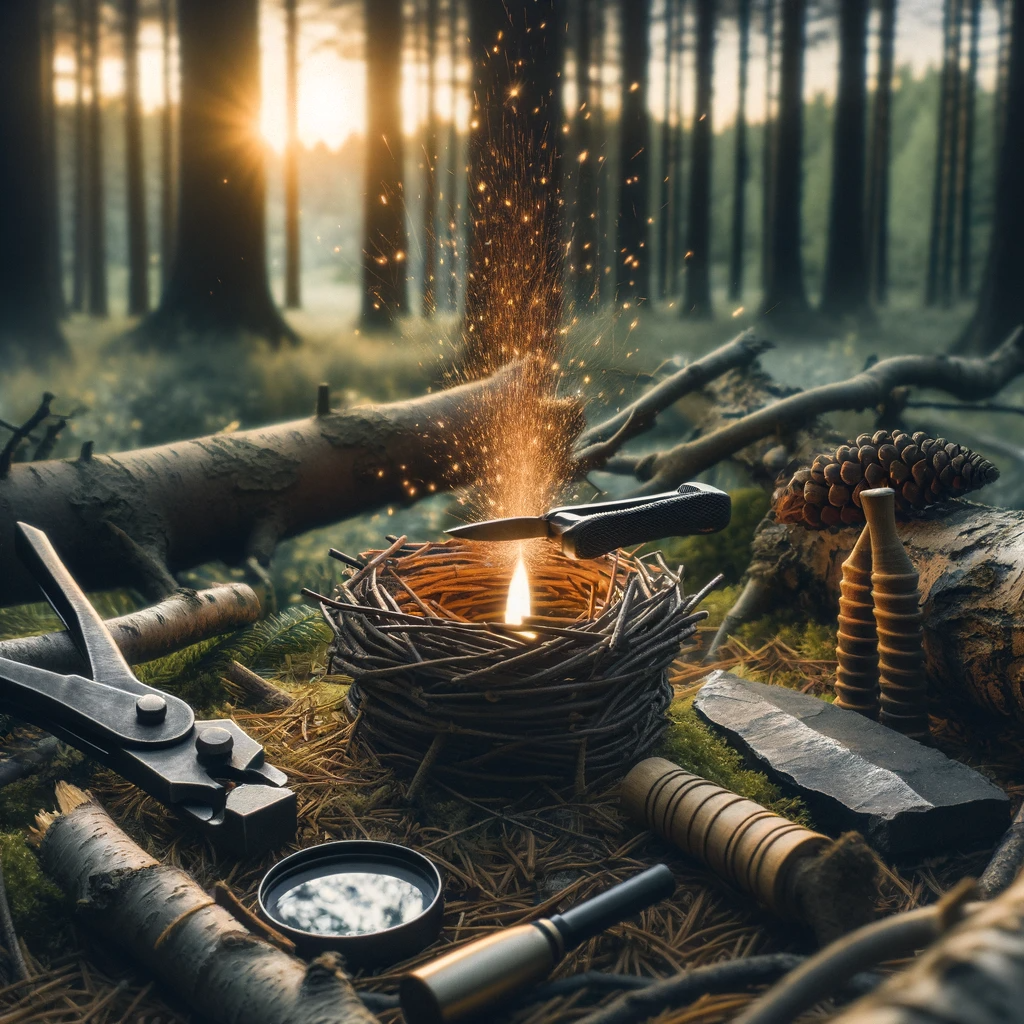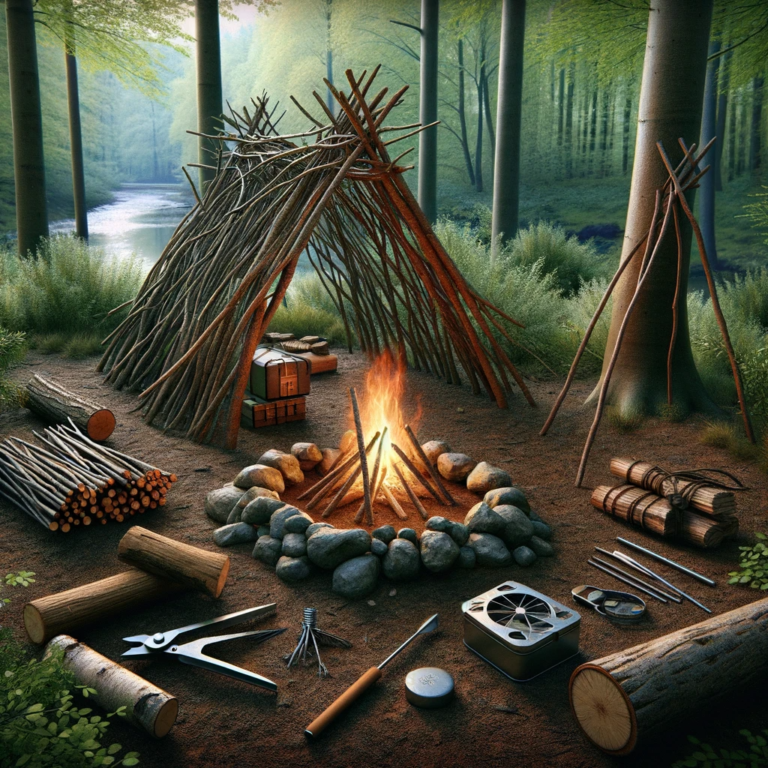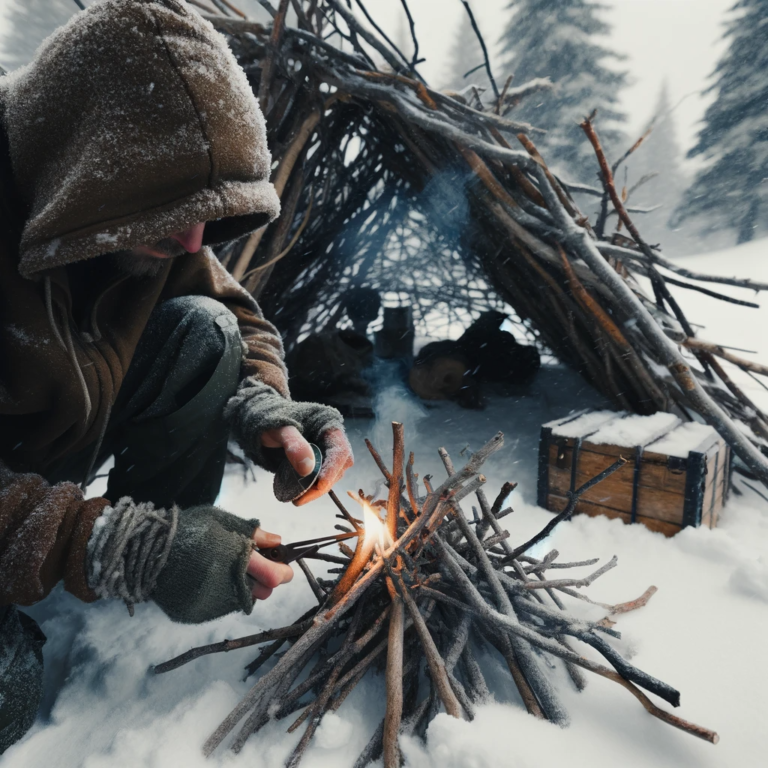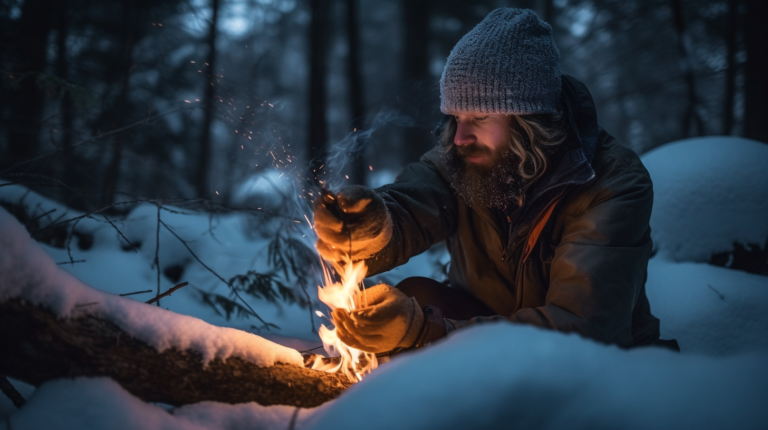What Are the Most Reliable Fire-Starting Survival Methods?
What Are the Most Reliable Fire-Starting Survival Methods? You might think starting a fire in the wild is a hit-or-miss affair, but with the right knowledge, it’s a skill you can master.
In your quest for freedom and self-reliance, mastering fire-starting methods is essential.
Friction-based techniques, like the bow drill or hand drill, tap into ancient wisdom and require nothing but perseverance and the materials at hand.
If you’re packing light, a magnifying glass can harness the sun’s power to ignite a flame.
Don’t overlook the simplicity of waterproof matches; they’re a steadfast choice in damp conditions.
For durability and ease, a ferrocerium rod is your go-to, sparking up under almost any circumstance.
And if you’re in a pinch, a battery and steel wool can create a quick blaze.
As you chart your path through the wilderness, these methods ensure you’ve got the spark to fuel your journey.
Key Takeaways
- Friction-based techniques such as the bow drill, fire plow, and hand drill require selecting the correct materials and dry, fine tinder.
- The magnifying glass method relies on strong sunlight and positioning the lens correctly to focus the sun’s rays onto the tinder.
- Waterproof matches like FireFlame are effective in challenging conditions and have a long burn time of 5 minutes.
- Ferrocerium rods, like the Exotac fireROD, can reliably produce hot sparks to ignite tinder, even when wet.
Friction-Based Techniques
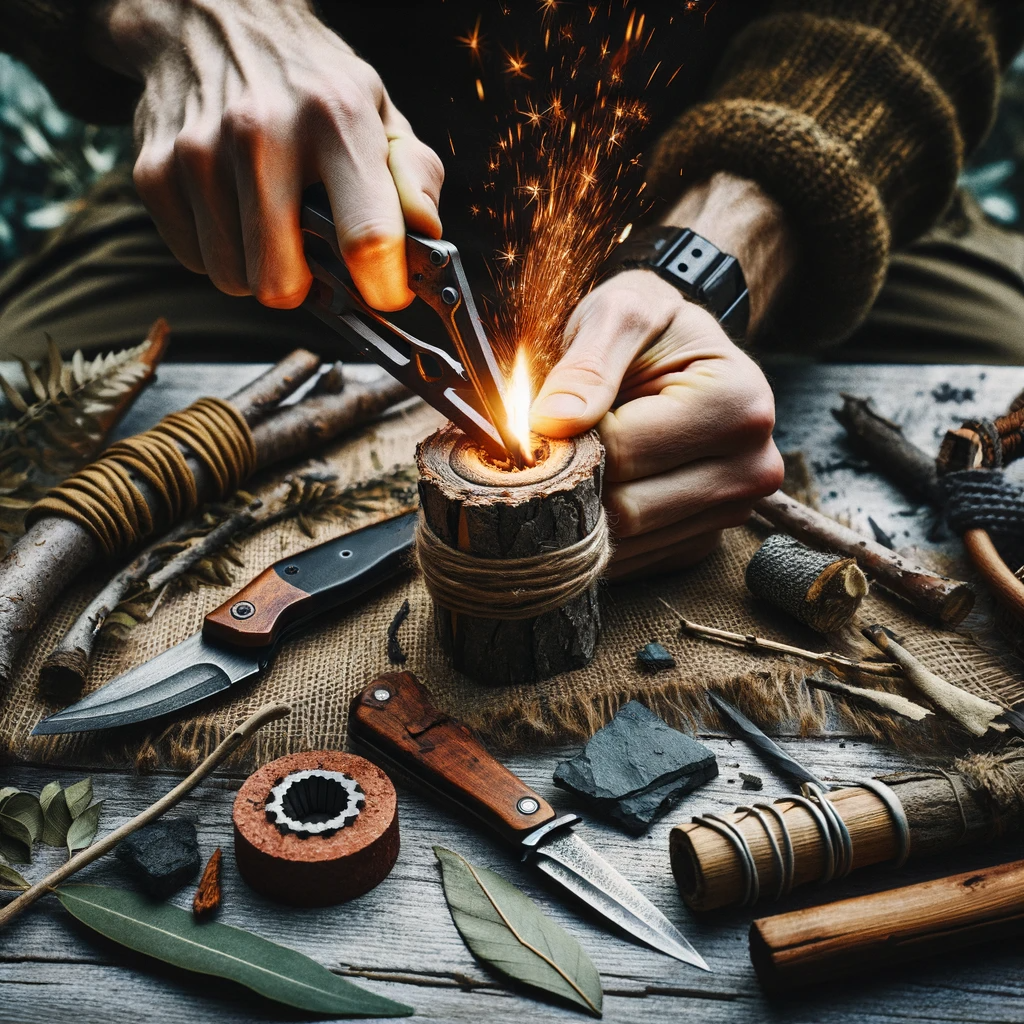
One must be adept at friction-based techniques as they’re a tried-and-true method to kindle a fire when survival hangs in the balance. Mastering the bow drill, the quintessential skill in wilderness survival, allows you to coax flame from raw nature. With a spindle and fireboard, you generate heat through vigorous spinning, an art requiring finesse and strength.
Your ability to start a fire using the fire plow or bow drill hinges on selecting the correct materials to start. You’ll need dry tinder, ideally fluffy and fine, to catch the ember you painstakingly create. Moreover, the wood for your drill and fireboard must be soft enough to generate friction yet hard enough to produce a coal.
The fire steel, an alloy of flint and steel, offers a more modern take on these ancient methods. Striking the flint against the steel produces sparks to ignite your tinder. Remember, the quality of your natural materials directly affects your success rate; damp or rotten wood won’t do.
In mastering these friction-based techniques, you’re not just learning to start a fire; you’re claiming independence from the modern world’s constraints, embracing the primal need for warmth and safety that our ancestors understood well.
Magnifying Glass Method
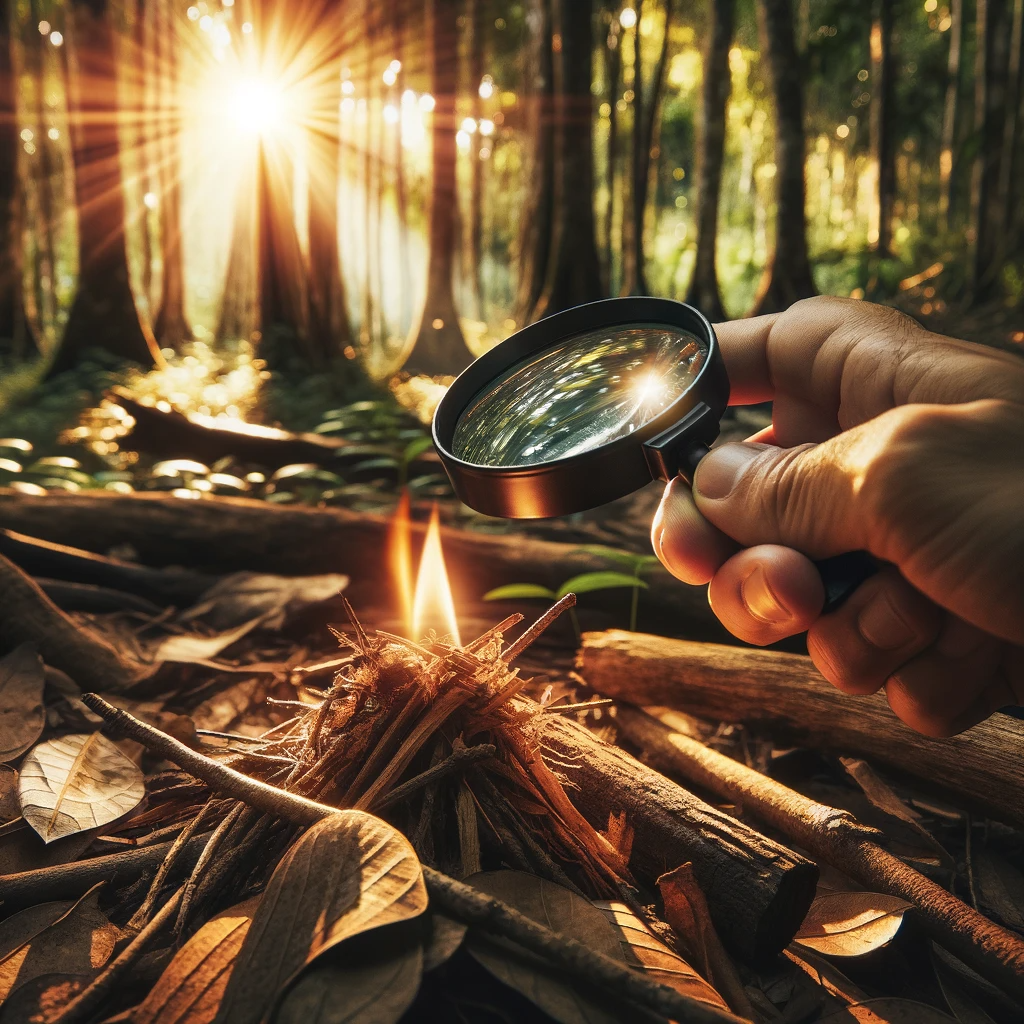
You’ll need strong sunlight to successfully use a magnifying glass for fire starting.
The lens’s focal length is crucial; position it correctly to pinpoint the sun’s rays onto your tinder.
This method stands out for its simplicity and reliability, especially when conditions are damp.
Sunlight Intensity Required
In achieving successful ignition with the magnifying glass method, you’ll need to ensure the sunlight is sufficiently intense to focus a small, hot spot on your tinder. For the best fire-starting results, the sunlight intensity required should be high—think midday sun with no clouds obstructing your beam.
Position the lens to catch the rays at the right angle, and you’ve got a concentrated heat source that’s incredibly efficient. Remember, a quality lens is non-negotiable; a scratched or subpar magnifier just won’t cut it.
As for your target, a pile of dry, combustible material is ideal. Magnesium alloy shavings, for example, catch quickly.
With the right setup, starting fires becomes straightforward; a magnifying glass can be an easy-to-use, reliable ignition source in your survival toolkit. Light a fire, and claim your freedom.
Lens Focal Length
After understanding the importance of sunlight intensity, let’s focus on the lens’s focal length, which is pivotal in harnessing that energy to start a fire effectively. The focal length of your lens determines how well you can concentrate sunlight into a single point to ignite your tinder.
Here’s what you need to consider:
- Lens Focal Length: A shorter focal length will concentrate sunlight more intensely, creating a hotter spot to start a fire quickly.
- Materials: Ensure you have dry, fluffy tinder to catch the flame easily once the sunlight is focused.
- Alternatives: While a magnifying glass is a preferred tool, eyeglasses or camera lenses can also work in a pinch.
Ditch the bow and drill; you’re carrying the power to create fire with nothing but sunlight and a magnifying glass. Embrace this freedom, and master starting a fire with the tools at hand.
Waterproof Matches Usage
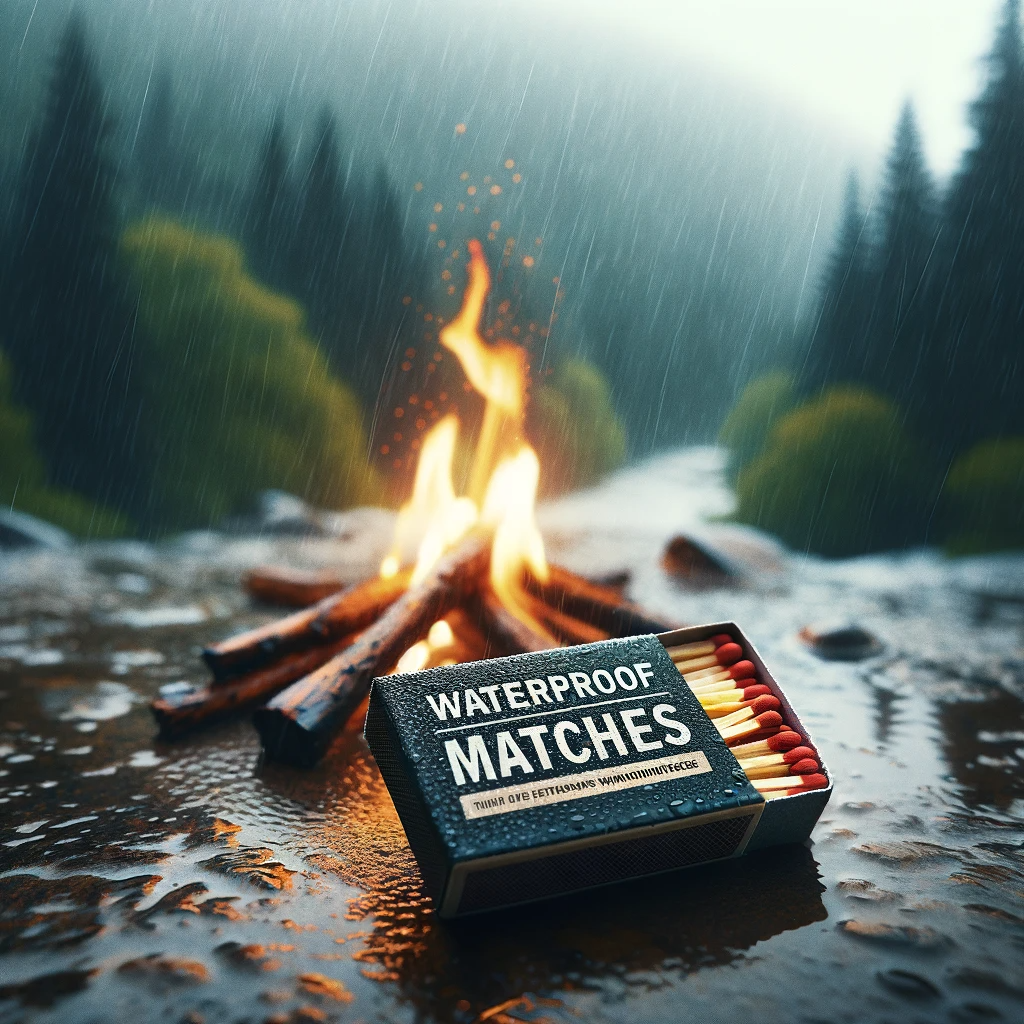
With waterproof matches like FireFlame in your kit, you’re equipped to start a fire under even the most challenging conditions. These survival essentials are designed to light up despite inclement weather, high winds, and wet conditions. Here’s how to use them effectively to get your fire started:
Firstly, ensure you’ve got your dry materials and waterproof tinder ready. It’s pointless to have a match that lights if there’s nothing to keep the flame alive. Once you’ve got your kindling sorted, it’s time to strike.
| Advantage | Disadvantage |
|---|---|
| Lights in wet conditions | Limited quantity |
| Long burn time (5 minutes) | Requires striking surface |
| Resistant to high winds | Must keep dry before use |
Even if the striking surface on your matchbox gets wet, you can use alternatives such as rocks or other rough surfaces. Hold the match firmly, strike away from your body, and shield it from the wind until the flame is stable. Once lit, transfer the flame to your tinder and nurture it into a full-blown fire.
Ferrocerium Rod Strikes
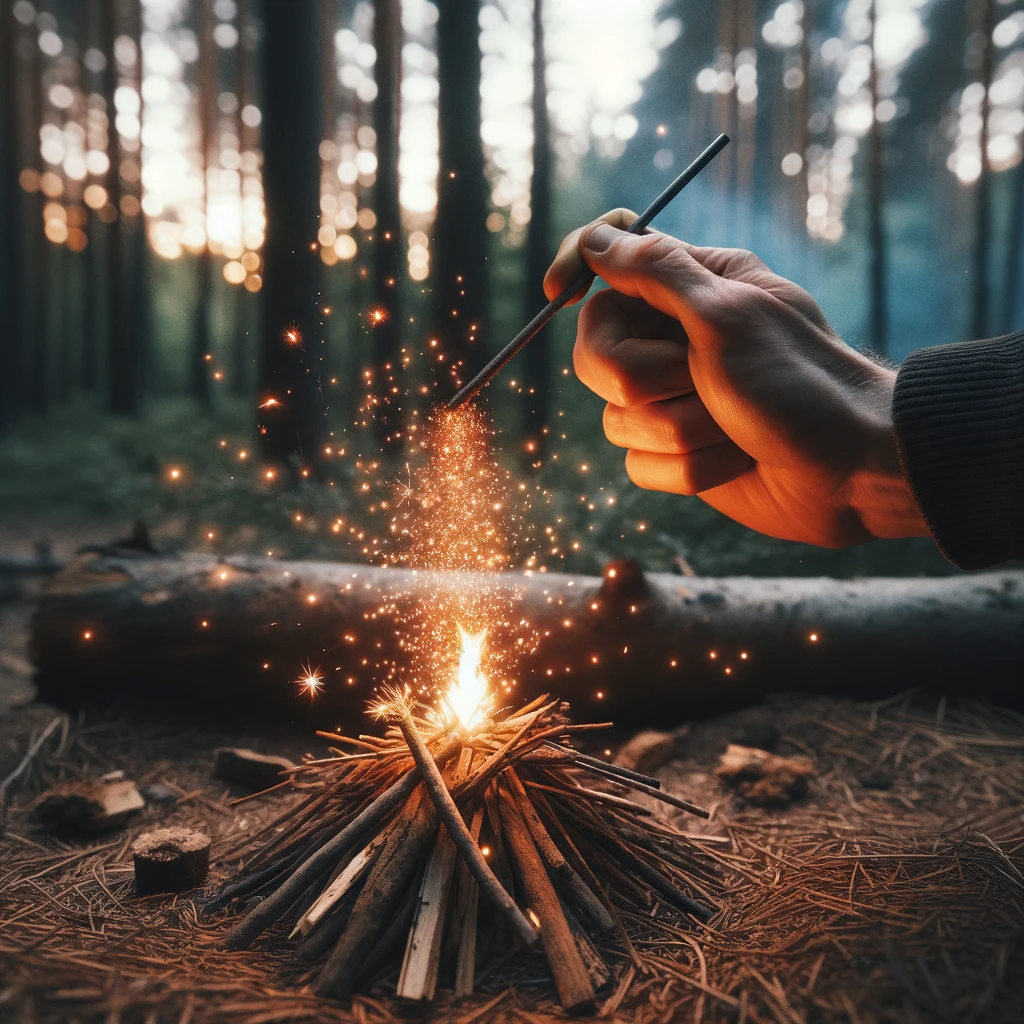
While waterproof matches are a great option, you’ll find that a ferrocerium rod, like the Exotac fireROD, offers an even more dependable method for starting fires in the wild. The Exotac fireROD isn’t just any ferro rod; it’s a fire starter that ensures you’re ready to face whatever Mother Nature throws at you. Its robust construction and waterproof tinder capsule make it a staple in any survival kit.
To effectively use a ferrocerium rod:
- Scrape: Use a stainless steel blade or a piece of steel to scrape the rod vigorously. This action creates hot sparks that can reach temperatures high enough to ignite a variety of tinders.
- Prepare: Have your tinder, such as steel wool or Pyro Putty, ready to catch the sparks. Ensure it’s positioned to take full advantage of the ferro rod’s burn time.
- Strike: Angle the ferro rod close to the tinder and strike it to shower hot sparks onto the material. Even if it’s damp, the ferro rod works when wet, giving you a reliable edge in challenging conditions.
Battery and Steel Wool
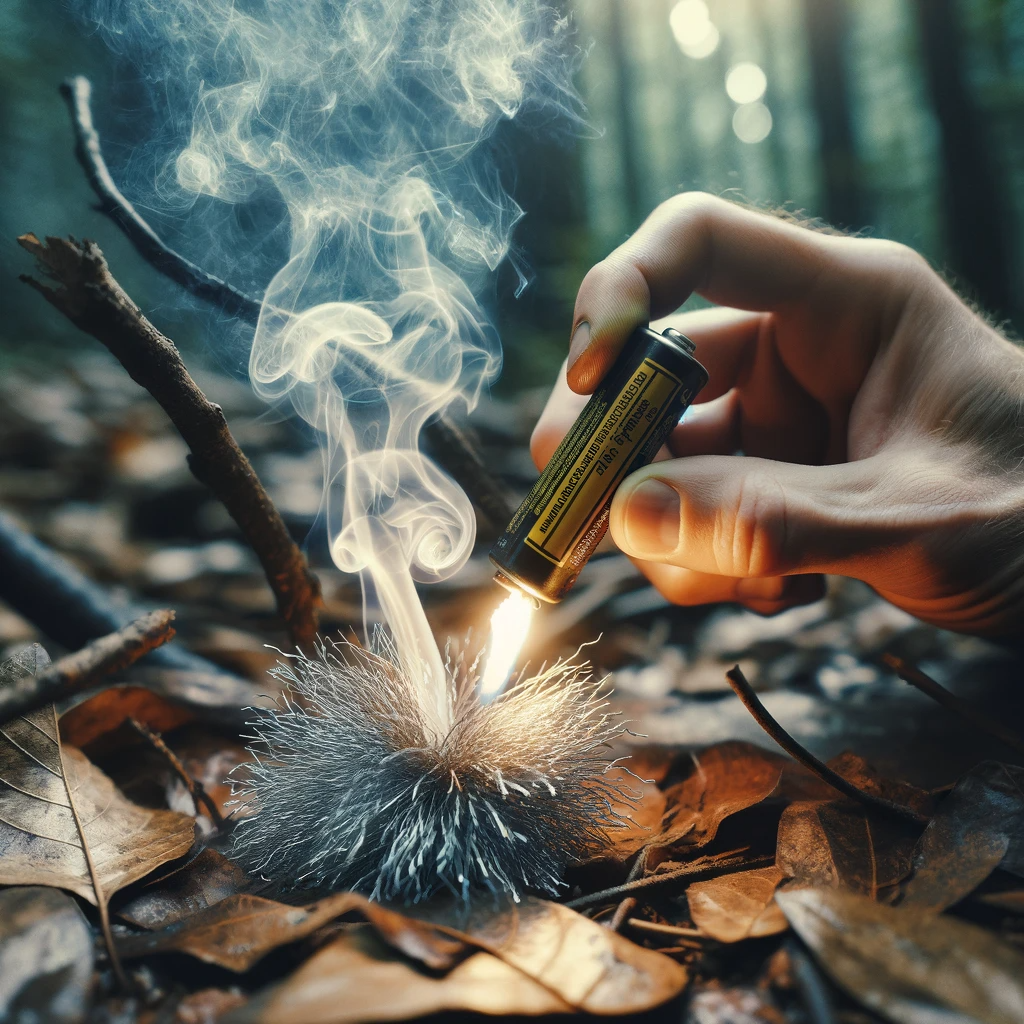
You’ve learned about the trusty ferrocerium rod, but don’t overlook the utility of a simple 9-volt battery and steel wool.
It’s a potent combination for igniting a fire quickly, leveraging the conductivity of steel fibers to create intense heat.
However, you must handle this method with care to avoid unintended sparks and ensure safety.
Technique Effectiveness
Your mastery of the battery and steel wool method can offer a dependable ignition source when traditional means fail. Unlike more common ferro rods or the SOL Fire Lite, this technique thrives on simplicity and readily available materials.
To bolster your technique effectiveness, consider these essentials:
- Magnesium block: Use shavings to catch the initial spark.
- Dryer lint or cotton balls: Combine with paraffin wax for a slow-burning tinder.
- Birch bark: Natural and resinous, it ignites even when damp.
With these, you’ll conquer wet wood challenges, making your fire-starting method as reliable as the latest Plasma Lighter.
The battery and steel wool method isn’t just a trick; it’s a symbol of your self-sufficiency and a testament to your readiness to brave the wild with confidence.
Safety Precautions
Although the battery and steel wool method is effective, you’ll need to handle the materials with care to prevent accidental fires or injuries. As a fire starter that’s able to start a blaze without matches, this technique requires your full attention and adherence to safety precautions.
| Precaution | Description | Relevance |
|---|---|---|
| Dry Storage | Keep battery and steel wool dry | Prevents short-circuit |
| Separate Items | Store items separately | Avoids accidental ignition |
| Mindful Usage | Be aware of surroundings | Reduces risk of unwanted fires |
| Legal Check | Ensure no restrictions on use | Complies with local regulations |
| Fire Sustenance | Prepare materials like a feather stick | Ensures fire will stay lit |
Invest in reliable camping gear like UST BlastMatch or Exotac fireRod for your emergency kit. These tools ensure you’re prepared and safe.
Now, let’s switch gears and explore the world of chemical fire starters, another crucial component in your survival toolkit.
Chemical Fire Starters
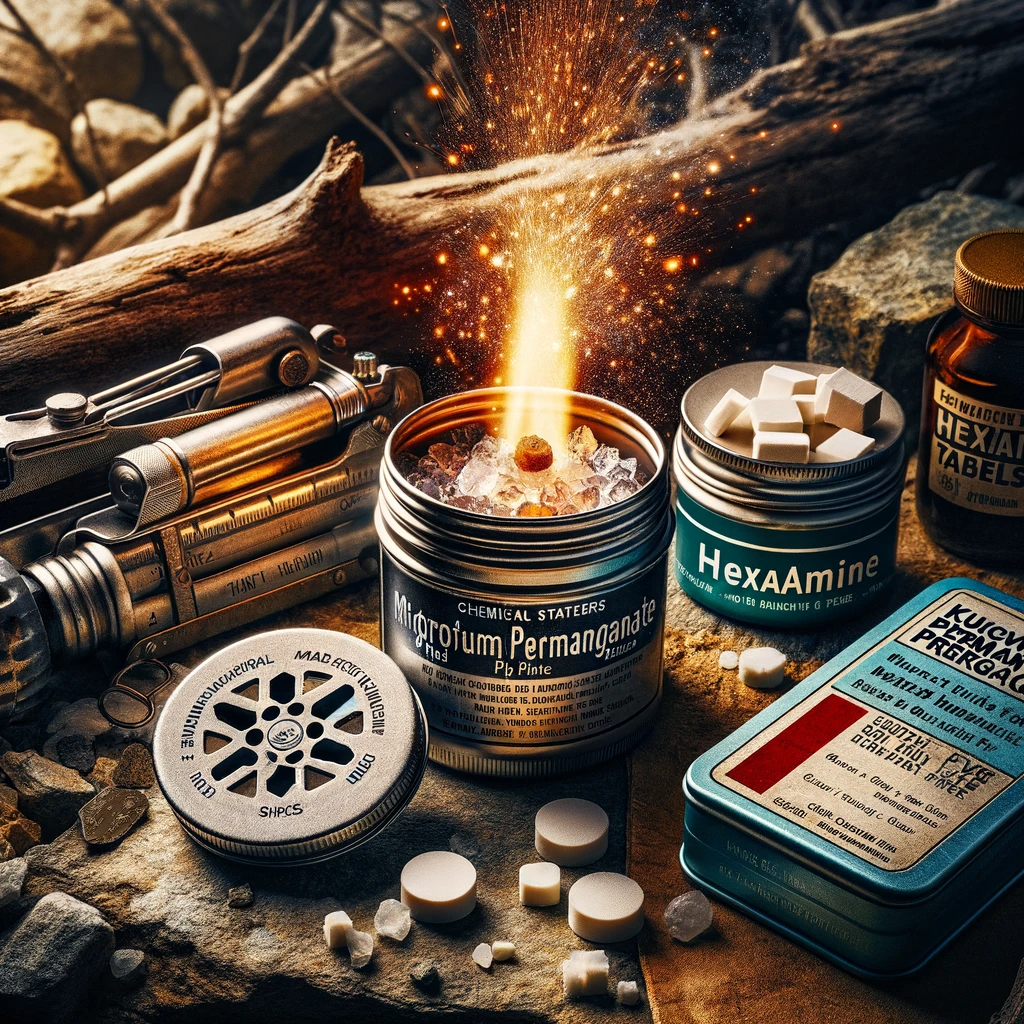
While you explore survival techniques, consider that chemical fire starters are a dependable option due to their consistent performance under various conditions. These starters, often easy to transport and use, can mean the difference between struggling with a flint and having a roaring fire in minutes—crucial when you need a fire for warmth or cooking.
Chemical fire starters like the Fire Lite Fuel-Free offer the freedom of a fire without traditional limitations. They’re highly combustible, ensuring you can get a fire going even in damp or windy situations. Let’s look at a few key advantages:
- Consistent and Long Burn: Many chemical starters burn for a long time, offering the entire length of time needed to make sure your fire is sustainable.
- Resistance to Elements: Whether it’s candle wax coated or designed to resist water, chemical fire starters are made to perform in various environments.
- Ease of Use: They simplify the fire-starting process, so you aren’t wasting precious time and energy.
What Are the Most Reliable Fire-Starting Survival Methods? Frequently Asked Questions
What Is the Best Fire Starting Material Survival?
You’ll find FireFlame the top pick for survival; it’s waterproof, easy to carry, and has a solid 5-minute burn. It’s dependable when your freedom and safety depend on a reliable fire.
What Is the Most Reliable Way to Start a Fire?
Imagine being stranded—your survival hinges on warmth. You’ll need the FireFlame for its reliability, waterproof design, and handy size. Pack it; it’s your best bet for a quick, life-saving blaze.
What Is the Easiest Way to Start a Fire for Survival?
You’ll find FireFlame the easiest way to start a fire for survival; it’s waterproof, natural, and burns for 5 minutes. Pack it for convenience and reliability, whatever the weather throws your way.
What Is the Best Primitive Fire Starting Method?
You’re seeking autonomy in survival – the bow drill method stands out. It’s primitive, effective, and harnesses skill over gear. Master it, and you’ll ignite fires with confidence, even when modern tools fail.
